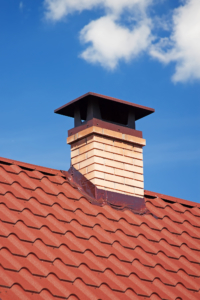 Many people do not understand the importance of chimney flashing until there is a leak. In fact, many homeowners don’t even know what it is.
Many people do not understand the importance of chimney flashing until there is a leak. In fact, many homeowners don’t even know what it is.
Flashing is the sheet metal that wraps around the base of the chimney where it meets the house. And once the flashing’s integrity is compromised, a homeowner is exposed to thousands of dollars in structural repairs.
So, what to do? The best course of action is to prioritize chimney inspection. The flashing is very important and requires an annual inspection. This is the best way to make sure that your chimney does not leak.
Read on to learn more about chimney flashing.
How Is Chimney Flashing Installed?
The first piece of sheet metal installed is the base flashing. It is inserted underneath a shingle and then bent upward to form an L-shape. After the bend, the base flashing runs up the chimney.
Next, the counter flashing is installed. This piece is installed on top of the base flashing. It seals off the top of the base flashing and is embedded into a chimney mortar joint.
Some other tools are needed to complete the flashing installation. For starters, application of durable and weather-resistant urethane caulk is needed to complete the weatherproof seal.
What Are the Different Types of Metal Used?
The region in which you live dictates the type of sheet metal used. In the South, chimney professionals use galvanized steel or aluminum products. And in the Northeast, professionals use lead flashing because it is easier to manipulate and bend. Here in Wisconsin, however, aluminum is a very common flashing choice.
Depending on the homeowner’s budget, copper may be utilized for its extended durability.
Is This a DIY Job?
Simply put, no. Chimney flashing is so important to preventing leaks that it requires an expert’s touch.
Even the industry’s best may finish installations with subtle vulnerabilities. For example, the corners are challenging and are vulnerable to water intrusion. Only an expert can spot these vulnerabilities and take corrective action.
It is these small areas that need to be addressed with weatherproof urethane caulk.
How Do You Know Repairs Are Needed?
A water leak is the most obvious sign that repair is required. High winds and animals are both capable of damaging flashing.
A chimney professional may also observe rusting or tears. In addition, the caulk needs an inspection to make sure it is not missing or loose. In some extreme cases, pieces of the flashing may come off altogether.
The chimney professional determines if repair or replacement is needed. The best time to get flashing replaced is when a homeowner gets another layer of roof shingles or installs a brand new roof.
Does Your Chimney Need New Flashing?
The connection between chimney and roof is so important to protect the home’s structural integrity. Missing caulk or rusted flashing can lead to expensive home repairs due to water damage.
By learning about the importance of flashing, you are now in a position to prevent this from happening. If you need a chimney flashing inspection in Milwaukee or Hales Corners, contact us to schedule an appointment.
